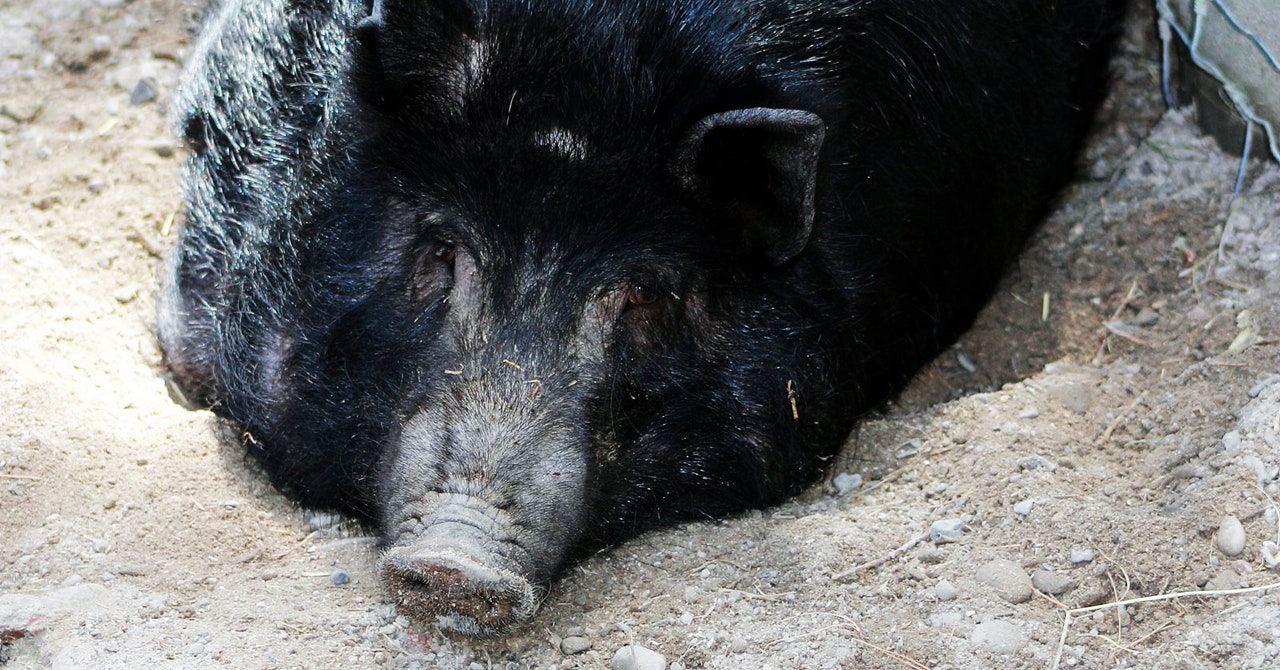
In the late 1990s, a London-based research team confirmed that, in a laboratory setting at least, PERVs could infect human cells.
The discovery, for a time, “killed xenotransplantation,” said Björn Petersen, a xenotransplantation researcher with the Friedrich Loeffler Institute, the German government’s animal-disease research center. “Pharmaceutical companies withdrew their money from the research.”
Around the world, the hunt was on for pigs that were as disease-free as possible.
In 1998, Diatranz partner Olga Garkavenko turned on her radio and got wind of Invercargill’s new arrivals. She decided to investigate.
The company obtained tissue samples from the quarantined pigs for analysis. The islands’ harsh conditions, it seemed, had been tough on disease.
“They remained isolated and therefore they remained free of a lot of common infections that you have in pigs,” said Tan. “The pigs that were weak were probably wiped out. Only the fittest survived.”
The pigs also have an unusually low number of retrovirus copies in their genome. Petersen noted that the population is also completely free of a type of PERV called PERV-C, which may pose the biggest risk to human transplant recipients. This was possible “because they were isolated for a long time and they never had contact with other pigs.”
Joachim Denner, a xenotransplantation researcher from the Free University of Berlin, said the Auckland Island pigs had another major advantage over other pig breeds—their small stature. At around 90 pounds in weight, he said, “they are the right size for transplantation.” A domestic pig weighs 300 to 700 pounds, and its organs, he added, are too large.
In 2004, Elliott, Tan, and others set up a company called Living Cell Technologies, or LCT, which absorbed Diatranz and took over the pigs’ care, building an expensive facility near Invercargill to keep them in medical-grade isolation while they were selectively bred for xenotransplantation.
The animals housed in quarantine were suddenly reputed to be worth hundreds of thousands of dollars each, much to then-mayor Shadbolt’s barely concealed glee.
The project brought jobs and millions of dollars of investment to Invercargill. “It has all come to fruition,” Shadbolt said in the 2008 Otago Daily Times article. “I rub it into those people who didn’t support me at every opportunity.”
By the 2010s, concerns around PERVs were lessening, as multiple clinical trials of cell transplants suggested not only that pig cells could be effective in treating diabetes, but also that PERVs weren’t passing to humans. New gene-editing technology also meant that retrovirus genes could be rendered non-functional before an animal was born.
With these advancements, the race to successfully implant pig organs in humans has gathered pace. Groups around the world now breed pigs for this purpose. It’s big business—a recent report estimated the global xenotransplantation market could be worth $24.5 billion by 2029.
In January 2022, a University of Maryland group, using a pig organ from the US company Revivicor, conducted the first successful transplant of a pig heart into a living patient. The patient survived for two months. While the cause of his death is still being examined, evidence of a disease called porcine cytomegalovirus was found during the autopsy. The pig used in the transplant, said Tan, would have been rigorously screened for the virus, which, he added, shows the importance of breeding pigs that are genuinely free from such diseases.


